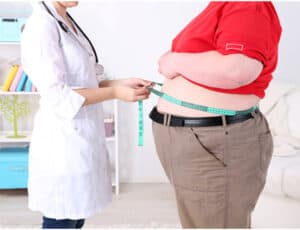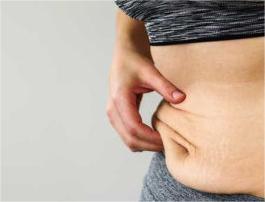A slim build and a reasonable weight are the desire of many people. In order to achieve them, people try to keep a healthy diet and regular exercise. However, despite strict regulations about food and exercise, certain parts of their bodies remain as usual and refuse to change. While people can’t achieve their goals in traditional ways, CoolSculpting and liposuction are two popular ways for people to choose.
In this article, you will learn more about these two treatment methods. A comparison will show you the differences and which one is suitable for you.
What is CoolSculpting & Liposuction?
Liposuction, also known as lipoplasty, liposculpture suction, lipectomy, or lipo, is a type of cosmetic surgery that breaks up and “sucks” fat from the body using a hollow instrument called a cannula and a powerful vacuum.
CoolSculpting is a noninvasive fat reduction procedure, which is also known as cryolipolysis, which uses controlled cooling to eliminate stubborn fat cells.
Similarities and Differences between CoolSculpting and Liposuction
Similarities
- Both CoolSculpting and liposuction are procedures that permanently remove fat cells from targeted areas of the body.
- Neither procedure is a weight loss solution or substitute for a healthy diet and exercise. They are intended for removing stubborn pockets of fat that don’t respond to diet/exercise.
- Common treatment areas include the abdomen, flanks, thighs, back, arms, and under the chin.
Differences
- Technique: CoolSculpting is a non-invasive procedure that uses controlled cooling to freeze and eliminate fat cells, which are then naturally flushed out by the body over 2-3 months. Liposuction is a surgical procedure where a cannula is inserted under the skin to physically suction out fat cells.
- Invasiveness: CoolSculpting requires no anesthesia, incisions, or downtime. Liposuction is an invasive surgery that requires incisions, anesthesia (local or general), and a recovery period of several days to weeks.
- Amount of Fat Removed: CoolSculpting can reduce up to 20-25% of fat cells in a treated area per session. Liposuction can remove larger volumes of fat, typically up to 5-8 liters or 50-70% of fat from an area in a single procedure.
- Precision: Liposuction allows the surgeon to precisely sculpt and contour the body by removing fat in specific patterns. CoolSculpting provides a more generalized fat reduction in the treated area.
- Cost: A single CoolSculpting treatment typically costs $2,000-$4,000 per area, varying greatly based on the treatment area’s size and location. The nature of non-invasiveness means initial costs are lower compared to more invasive procedures. On the other hand, liposuction costs are generally higher. The cost of liposuction starts at around $3,500-$8,000 depending on the areas treated and other factors.
- Recovery: CoolSculpting has minimal recovery with just potential temporary bruising, numbness, or discomfort.
Liposuction requires several days to weeks of recovery and may involve swelling, bruising, compression garments, and activity restrictions initially.
Here’s a quick comparison:
| CoolSculpting | Liposuction | |
|---|---|---|
| Procedure Type | Noninvasive | Invasive |
| Fat Removed | 20-25% | 50-70% |
| Anesthesia | No | Yes |
| Recovery Time | Minimal | Days to weeks |
| Target | Small, specific areas | Larger areas |
| Result | Subtle | Dramatic |
| Average Cost for Each Part | Varies, generally less (2,000- 4,000 dollars) | Varies, generally more (3500-8000 dollars) |
Candidates for CoolSculpting and Liposuction Treatment
Before deciding which treatment to choose, it is important to make sure if you are a suitable candidate for CoolSculpting or liposuction or not.
Candidates for CoolSculpting
- Have at least 1 inch of pinchable subcutaneous fat (fat above the muscle) in the treatment area
- Are within 2-5pounds of their ideal body weight, with a BMI under 30 generally
- Have realistic expectations for modest, gradual fat reduction (20-25% per treatment) rather than dramatic weight loss
- Are seeking to target specific stubborn fat areas like the abdomen, flanks, and thighs that don’t respond to diet/exercise
- Are generally healthy non-smokers without conditions affecting the lymphatic system
- Are willing to maintain results with a healthy diet and lifestyle after treatment
Candidates for Liposuction
- Are within 30% of their ideal body weight with firm, elastic skin
- Have localized fat deposits that don’t respond to diet and exercise
- Are generally healthy non-smokers without conditions that impair healing
- Have realistic expectations for body contouring, not dramatic weight loss
- Don’t have loose, inelastic skin that would result in poor skin re-draping after fat removal
In summary, good candidates have specific areas of diet/exercise-resistant fat, are at or near their ideal weight, have reasonable expectations, and are generally healthy. Those seeking dramatic weight loss or with certain medical conditions may not be good candidates.
Key factors in deciding which option is better for you

When you think about liposuction and CoolSculpting, which one is your better choice, your personal goals and medical advice are paramount. Both are effective cosmetic procedures for fat reduction but cater to different needs and expectations.
Evaluating Your Goals
CoolSculpting might be suitable if you’re seeking a non-invasive method to address smaller areas of stubborn fat. It is most effective when you are near your ideal weight but have localized fat deposits that do not respond to diet or exercise. Liposuction, on the other hand, is a surgical option that can remove larger quantities of excess fat and may result in more dramatic body contouring.
Before deciding on a procedure, consider your tolerance for downtime, your body contouring expectations, and your readiness for surgical intervention.
Consultation with a Plastic Surgeon
A consultation with a board-certified plastic surgeon is crucial to determine which procedure aligns with your body contouring goals. During the meeting, you can discuss:
- Your desired results
- Medical history and current health
- Potential risks and benefits of each procedure
- Recovery time and post-procedure care
Your surgeon can evaluate your body’s specific needs, discuss how each procedure aligns with your goals, and guide you toward the best choice for your unique case. A thorough consultation ensures that you make an informed decision based on professional medical advice.
Qualified Providers
Locating a qualified provider is crucial for both treatments. For liposuction, you should look for a board-certified plastic surgeon to ensure high standards of care and professionalism.
- CoolSculpting: Seek providers with specialized training in the procedure.
- Liposuction: Look specifically for a board-certified plastic surgeon with a strong track record of success in liposuction.
Before finalizing your choice, schedule a consultation with your prospective provider to discuss your goals and assess their qualifications. With the right professional, either procedure can be a safe step towards achieving your body contouring objectives.
Long-Term Maintenance of CoolSculpting and Liposuction
- Healthy Diet: Maintaining a healthy diet is crucial for sustaining fat loss.
- Exercise: Regular exercise will help preserve the effects of the procedure.
- Weight Loss: These procedures are not substitutes for weight loss; they’re designed to target specific areas where fat is resistant to diet and exercise.
About your Choice
Each treatment has its benefits and drawbacks. Your decision really depends on your purpose of treatment, your budget and your expectations of treatment effects. Actually, both two are good methods for fat loss。 Before your decision, make sure you consider your concerns accurately and comprehensively so that you can make a wise and correct choice






